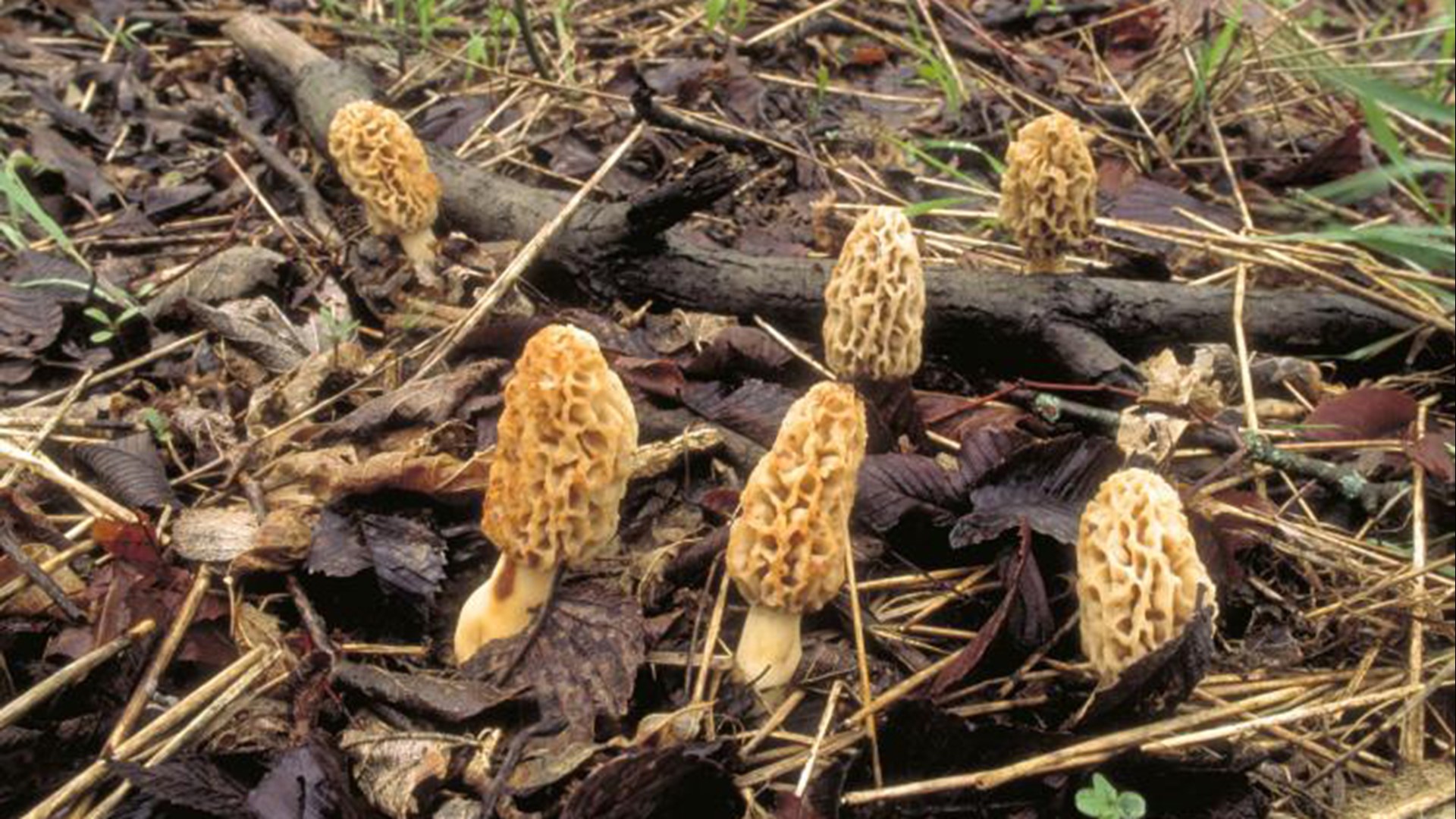ARKANSAS, USA — Morel Hunting usually only lasts 4 weeks centered around April. Many are attracted to the hunt which can be elusive and rewarding.
Arkansas Master Naturalist Jay Pitts along with the Northwest Arkansas Master Naturalists teach about conservation and ecology. They volunteer time to educate the public, monitor streams, remove invasive species, and plant native plants and trees.
When Spring arrives, Pitts indulges in his longtime passion of morel hunting. His family has lived in Arkansas for six generations, and he remembers the first time he came across the "dry land fish."
"About 41 years ago, when I lived here in Madison County, I found my first morels," Pitts said. "That put me on the journey of learning and picking edible mushrooms."
Pitts specializes in edible mushrooms and teaches classes on morel hunting once a year at ONSC. He also is an admin for the Facebook group The Original Arkansas Morel Hunters.
"They're really dependent on the rain. And once it starts getting hot and we don't have much rain, then the mushrooms can suffer after that," the master naturalist said.
The Fungi is a product of the mycelium as a reproductive structure that will release spores as it grows into an adult. After that, he explained the mushroom would shrivel up if not picked.
He explains that the mushroom arrives with warmer temperatures and warm ground. It relies on rain to keep going through the season. He explained that the midwest's moist forests make for the perfect environment. This year, temperatures warmed up in February, starting some growth, but cold spells have shriveled some of the fungi. It's made the season sporadic and Pitts said the season would likely end at the start of May.
"A lot of people describe it as the adult Easter egg hunt," Pitts said.
Arkansas is home to four morel species, Pitts explained. Black and yellow morels are the most sought-after. There are false morels that can be toxic to humans. Luckily for the natural state, Pitts says they're found on the conifers of the north, leaving us free of most toxic false morels.
"It's not easy, and they don't just grow everywhere. A lot of people have searched for years and never found one, so when they actually do find a morel, they're really really tickled about it," Pitts explained. "The people that pick the most morels just skip over counting them and start telling you how many pounds they've got."
The master naturalist said the best kind of morel habitat you can find in Arkansas is a river valley floodplain. With the water flooding the area, the trees keep hydrated. He explained further to look at the tops of the mounds for the morels. Avoid ditches or standing water.
For Pitts, hunting morels calls for the art of finding the right trees. He explained that the best are ash, sycamore, elm, and also wild cherry. When redbuds bloom, you can expect morels to begin growing. When Dogwood blooms are open and big, he said that's when you can find big yellow morels.
"They trade nutrients with the trees and our hardwood trees give them sugars and stuff like that as a trade-off," Pitts explained. "The mushroom you see growing out of the ground isn't really the living part of a mushroom. The living part is mycelium under the soil. And that mycelium lives in the roots of trees for decades."
Pitts said you can likely forage for morels on private property and said national parks typically allow it. Foraging isn't permitted in Arkansas state parks however. Once you find a host tree, he said you can likely find morels there for years to come.
Morels growing in the same spot isn't a guarantee though, as he explained mycelium requires certain chemical signals to grow. That's why yellow morels aren't sold commercially, as that process hasn't been thoroughly figured out. He explained that there was a breakthrough in Europe, but that the morels that grew on dead wood didn't taste as good. He explained that "it's not very easy to grow the eastern yellow morel at all, and nobody's successfully done it in a commercial venture yet."
Pitts described wild morels as having a nutty and meaty taste. In 2023, he said morels can go for $50 a pound but typically go for $30 in less sporadic seasons. He says professional foragers typically start their season in Georgia as soon as February. Yet the elusiveness of the mushroom always keeps demand higher than supply.
"Usually, I've gotten way more people wanting to buy them than I have morels to go around," Pitts said.
The Arkansas master naturalist said to never consume a mushroom unless you can identify it first. He warns of ticks and snakes. Pitts joked multiple times that he always takes photos of mushrooms and snakes on his trips as they typically share the same cool and moist wooded areas.
There are many ways to prepare a morel. Some put them in a saltwater mixture to rid of any insects in the mushroom. Pitts rinses his under water. He said you can eat the mushroom with meat, his favorite recipe is pork chops with morels and brandy cream sauce. He says, although, the classic way to eat a morel is fried.
Download the 5NEWS app on your smartphone:
Stream 5NEWS 24/7 on the 5+ app: How to watch the 5+ app on your streaming device
To report a typo or grammatical error, please email KFSMDigitalTeam@tegna.com and detail which story you're referring to.

